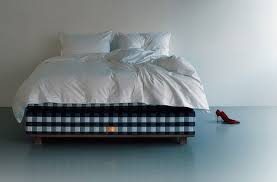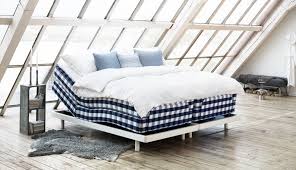This is not a Ferrari or Maybach, neither is it a mansion, but a single item in a mansion. The Hästens Vividus bed is probably the most expensive bed in the world right now.
The $149,900 bed is currently up for sale at the company. Obviously, the Swedish company has taken time to craft this natural, but amazing sleeping device.
So why will you pay $149,900 for a bed? According to Bloomberg,
“The Hästens Vividus bed does not come with a guarantee to quiet crying babies. It does not vow Peter Pan-like trips to Never Never Land every night. The tooth fairy does not leave $100 bills under its extraordinarily comfortable pillows—although given its nearly $150,000 price tag, that would be a nice perk.”
So what makes the bed so special? I think the answer lies in three basic things.
- Key details: A custom-made continental bed built by four master artisans at the Hästens workshop in Köping, Sweden. A pinewood frame, steel springs, and layers of flax, horsetail hair, and cotton and wool batting
- Competitors: None, really. But for that price you could also get a Mercedes AMG GT S (from $131,200); Vacheron Constantin Traditionnelle Day-Date & Power Reserve watch (from $150,000); Tiffany Circlet Diamond Necklace ($150,000)
- Why It’s Worth It: If you keep it for 25 years and get eight hours of sleep every night, think of it as paying $2 every hour for the privilege of blissful, blissful sleep.
With a good night’s sleep, you live longer, learn faster, function better, stay in better shape, and look younger. For the cost of a high-end Mercedes or a collectible timepiece, you can take a dip in an all-natural fountain of youth every evening. Or so the thinking goes.

A Bloomberg reporter went to the company showroom in New York’s Chelsea neighborhood to check it out in person and has this to say:
“The price intrigued me the same way that pictures of exploded Ferraris do: How can something that looks so ordinary be so valuable? And on first glance, the Vividus looks like a typical bed. There’s no wide-screen TV that emerges from underneath the box spring, no built-in refrigerator. It doesn’t spin in circles like a jewel on display beneath a decadent mirrored ceiling.”
“But before I can crawl beneath the covers, Hästens’s vice president of global retail, Bob Cooper, walks me through the history. The first Vividus came out in 2006, a version that took 160 hours to create and cost $112,900. In the 10 years since, the company has researched how to regulate body temperature and provide support to create what it calls a “perfect night’s sleep” without using any heat-trapping rubber or plastic materials. They ended up doubling the amount of time it takes to build the bed—now 320 hours—and the company uses just four certified craftsmen at Hästens’s dedicated atelier in Sweden to make them. Each Vividus is built to order and takes a minimum of 10 weeks before delivery.”
How does this all add up to $149,000?
“It starts at the bottom. The wooden frame is made from slow-growing northern Swedish pine. On top of that sits a box spring, called the base, that has pure steel springs and multiple layers of flax for soundproofing. Above that is the mattress, which holds more springs, layers of cotton and wool batting, and horsehair lining, stacked the way you might make a lasagna. The mattress pad, or “topper,” has its own layers of cotton, wool, and horsehair.”
“Horsehair is critical: The hair is braided by hand, then unwound, to give it even more bounce. Every single curled strand functions like a tiny spring, providing support and pliability. And because each horsehair strand is also a hollow tube (unlike human hair), the material acts as a miniature airway to wick moisture away so there’s no sweat buildup. The cumulative effect of all these layers is that when you lie down on the bed, you feel as if your legs are slightly raised, which, as doctors will tell you, is better for circulation and overall heart health.”

